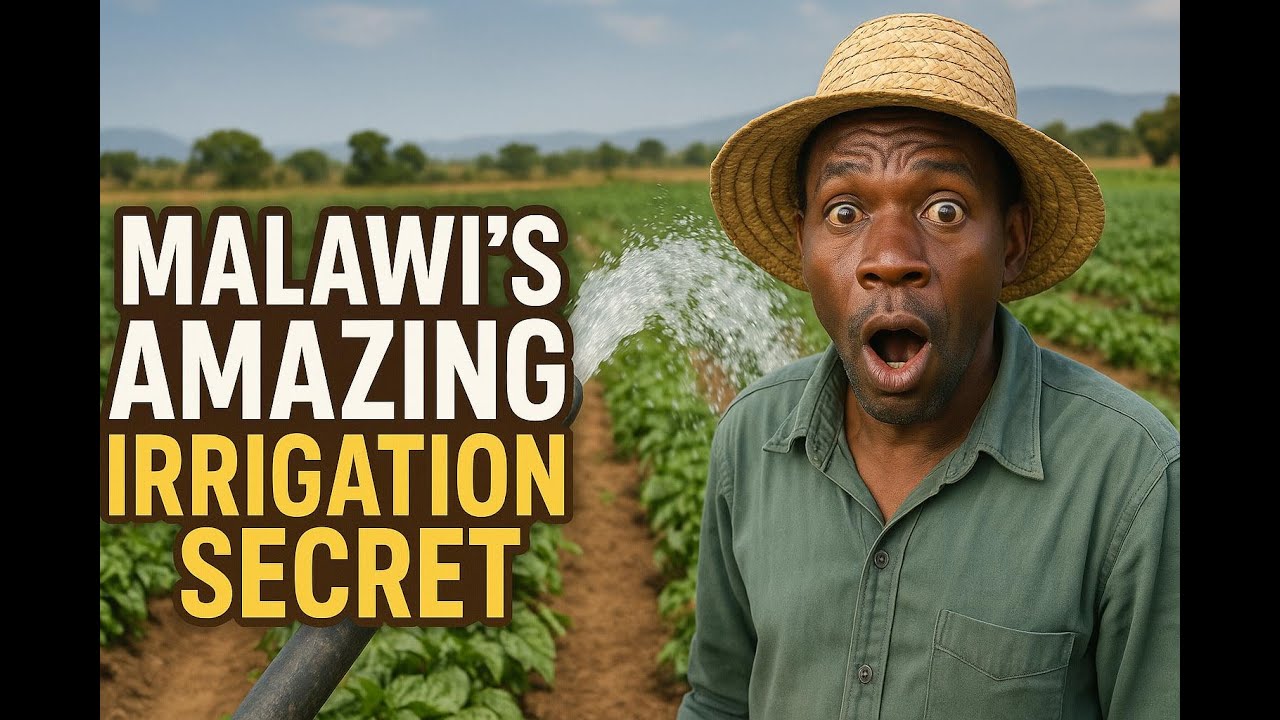Economic Diversification in Mining-Dependent Regions: 6 Strategies
“In 2025, over 60% of mining-dependent regions plan to invest in sustainable agriculture for economic diversification.”
- Introduction
- The Need for Economic Diversification in Mining-Dependent Regions
- 6 Strategies for Economic Diversification
- 1. Developing Agricultural Value Chains
- 2. Promoting Forestry and Sustainable Land Use
- 3. Investing in Infrastructure and Renewable Energy
- 4. Encouraging Small and Medium Enterprises (SMEs)
- 5. Skills Development and Education
- 6. Leveraging Technology and Innovation
- Comparative Strategy Impact Table
- Policy and Governance Considerations
- Farmonaut Satellite Technology: Enabling Diversification and Sustainability
- Frequently Asked Questions
- Conclusion
Economic Diversification in Mining-Dependent Regions: A Pathway to Sustainable Growth in 2025
Mining-dependent regions have historically acted as engines of economic growth, leveraging their rich mineral resources—such as copper, gold, lithium, and cobalt—to generate employment, government revenues, and critical infrastructure. However, the heavy reliance on a single sector introduces considerable risks to regions worldwide. These risks—driven by commodity price volatility, environmental degradation, and the eventual depletion of mineral resources—can threaten the long-term socio-economic stability of these economies.
As we approach 2025, economic diversification in mining-dependent regions is no longer a policy aspiration—it is an imperative strategy for resilient, sustainable development. Thoughtful diversification enables mining areas to adapt to global economic cycles, foster green growth, and offer inclusive prosperity for local communities.
The Need for Economic Diversification in Mining-Dependent Regions
Mining regions are often subject to boom-and-bust cycles dictated by global demand and prices. When mineral prices crash—be it copper, gold, lithium, or cobalt—the result is mass layoffs, reduced public spending, and economic contraction. These shocks disproportionately impact local communities; layoffs lead to economic instability, while reduced government revenue affects basic public services.
Additionally, mining activities severely impact the environment: they cause deforestation, water contamination, soil degradation, and health risks due to pollution. As global attention focuses on sustainability, the pressures intensify on mining-dependent areas to transition toward balanced economic structures that embrace green industries and reduce vulnerability.
- Commodity price volatility threatens the stability of mining-based economies.
- Environmental degradation impacts agricultural potential, water resources, and public health.
- Over-reliance on a single sector can intensify social and economic issues when mining resources are depleted.
Therefore, as the global economy advances, economic diversification—particularly toward sectors like agriculture, forestry, innovation, and renewable energy—has become a pathway toward long-term resilience and sustainable growth in 2025 and beyond.
“Forestry-based industries can boost local GDP by up to 15% in post-mining economies using green growth strategies.”
6 Strategies for Economic Diversification in Mining-Dependent Regions
Now, let’s examine the key strategies for achieving robust economic diversification in mining-dependent regions, highlighting 2025 and future trends. These strategies promote inclusive development, enhanced resilience, and a sustainable environment.
1. Developing Agricultural Value Chains
Despite the richness of fertile lands in many mining regions, agriculture remains underutilized. Investment in modern farming techniques, agro-processing facilities, and supply chain infrastructure can promote agribusiness as a reliable alternative or complement to mining.
- Developing high-value crops, organic farming, or livestock: Diversifying agriculture improves food security, increases income stability, and generates rural employment.
- Agro-processing: Investing in local processing facilities adds value to agricultural products, enabling regions to tap into domestic and international markets.
- Supply chain investment: Reliable transportation and storage infrastructure enhances access to markets and reduces post-harvest losses.
Satellite-based agricultural monitoring by platforms like Farmonaut can empower local communities and agri-businesses by providing real-time data on soil health, crop condition, and resource management—optimizing yields while promoting sustainability.
Recommended Link: For comprehensive monitoring and data-driven decisions in agricultural investment and crop management, explore Farmonaut’s Large-Scale Farm Management Solutions.
2. Promoting Forestry and Sustainable Land Use
Rehabilitating mined lands through afforestation and the establishment of sustainable forestry offers significant opportunities for economic diversification. Forestry-based industries—such as timber products, non-timber forest resources, and eco-tourism—can generate new employment and restore ecosystems.
- Afforestation and reforestation: Restoring forests on old mining lands not only creates green jobs but also helps to sequester carbon, aligning with climate action goals.
- Non-timber forest products (NTFPs): Includes sustainably harvested products like honey, medicinal plants, and nuts, which can establish niche markets and support SMEs.
- Eco-tourism: Eco-tourism on rehabilitated lands and forests promotes environmental education while attracting investment and supporting local businesses.
- Sustainable forest management: Proper management practices facilitate long-term resource sustainability and may provide access to carbon credits and green finance.
Efficient, transparent monitoring—such as using satellite data—plays a critical role in resource management, helping communities assess reforestation progress and combat land degradation.
3. Investing in Infrastructure and Renewable Energy
Most mining regions already possess foundational infrastructure—such as roads, power supply, and water systems—which can be upgraded and extended to support new economic activities beyond mining.
- Renewable energy deployment: Investing in solar, wind, or small hydropower solutions helps meet local energy needs and attracts green industries. Renewable projects reduce reliance on fossil fuels, mitigate emissions, and offer employment.
- Infrastructure expansion: Improved transport, digital, and energy infrastructure enables greater connectivity and market access for agriculture, SMEs, and tourism.
- Public-private partnerships: Governments and the private sector can collaborate on shared infrastructure to lower risks and costs for local entrepreneurs.
Satellite-driven infrastructure monitoring and predictive maintenance—enabled via platforms like Farmonaut—allows regions to optimize resource use and investments.
Want streamlined environmental oversight for renewable energy projects? Learn how Farmonaut’s Carbon Footprinting solutions can help.
4. Encouraging Small and Medium Enterprises (SMEs)
Fostering the growth of SMEs in sectors such as manufacturing, services, and technology is foundational for true economic diversification in mining-dependent regions.
- Entrepreneurship: Encouraging local entrepreneurship—by providing capacity building, access to finance, and business incubation—stimulates innovation, creates jobs, and diversifies income streams.
- Special Economic Zones (SEZs): Targeted SEZs for non-mining industries can catalyze investment and provide tax incentives.
- Market linkages: Strengthening connections with national and global supply chains maximizes value addition and exports.
Financing platforms—backed by data-driven verification such as Farmonaut’s crop loan and insurance solutions—can unlock credit for SMEs and small producers, reducing risk for lenders and improving access to investment.
Explore Data-Driven SME Financing: Farmonaut Crop Loan and Insurance tools deliver satellite-based verification for loans and insurance, empowering entrepreneurs in diversified sectors.
5. Skills Development and Education
Equipping the local workforce with diversified skills is vital for sustainable economic diversification. As the economy transitions beyond mining, demand for talent in agriculture, forestry, renewable energy, infrastructure management, and digital technology rises sharply.
- Vocational training: Focused education in fields such as agricultural innovation, eco-friendly mining rehabilitation, and green technology prepares workers for emerging industries.
- Business and management skills: Enabling local entrepreneurs with knowledge of finance, digital marketing, and supply chain management.
- STEM education: Emphasizing science, technology, engineering, and math yields a future-ready workforce.
Satellite and digital platforms, including Farmonaut’s solutions, offer access to modern techniques, advisory systems, and real-time data for education, supporting workforce transformation and capacity building.
Boost Forest and Plantation Advisory: Leverage Farmonaut’s Crop Plantation & Forest Advisory for knowledge-driven sectoral growth.
6. Leveraging Technology and Innovation
In the 2025 era, digital tools and innovation offer transformative potential for sectors beyond mining. Precision farming, remote sensing for resource management, and blockchain for supply chain traceability can increase productivity and support sustainability.
- Precision agriculture: Satellite, drone, and sensor-based technologies enable data-driven management of fields for optimized yields and resource use.
- Resource monitoring: AI and remote sensing applications help assess land restoration, forest health, and infrastructure resilience.
- Blockchain traceability: Enhances transparency for agricultural and non-mining supply chains, building trust, and opening premium market opportunities.
For example, Farmonaut’s blockchain-based traceability solutions empower supply chain integrity—vital for agri-businesses and forest product exporters adapting to global standards.
Traceability Solutions for Green Supply Chains: Discover Farmonaut Traceability Solutions for agriculture, forestry, and emerging green sectors.
Comparative Strategy Impact Table: Six Key Strategies in Mining-Dependent Regions
Effective planning for economic diversification requires a holistic view of each strategy’s potential impact. Below, explore a comparative table featuring estimated implementation costs, job creation potential, carbon footprint reduction, and long-term growth potential for the six strategies outlined above. These values provide context on the environmental and economic gains pivotal for sustainable development in mining-dependent regions – 2025 and beyond.
Policy and Governance Considerations for Sustainable Economic Diversification
Accelerating economic diversification in mining-dependent regions depends on clear, coherent policies and robust governance. Governments should enact frameworks that strategically invest mining revenues into long-term development rather than short-term spending.
- Transparent Resource Management: Clear mechanisms to track and channel mineral revenues into diversification initiatives, avoiding misuse and ensuring public support.
- Environmental Regulation: Enforce strong environmental standards, especially in land rehabilitation, water resource management, and pollution control.
- Community Engagement: Participation and input from local communities in decision-making processes heighten project buy-in and ensure equitable outcomes.
- Cross-Sector Partnerships: Although regions should focus on local capabilities, private sector involvement and international expertise—via knowledge transfer and sustainable investment—can complement government efforts for inclusive prosperity.
- Incentives for Green Industries: Tax breaks and subsidies for investments in renewable energy, agribusiness, forest management, and technology.
To support these frameworks, digital governance tools—such as blockchain-based traceability and resource management platforms—make regulation and transparency easier and more effective throughout the value chain.
Farmonaut Satellite Technology: Enabling Diversification and Sustainability
As the world shifts toward resilient, data-driven economic diversification in mining-dependent regions, satellite and digital innovation become essential. Farmonaut offers a suite of technologies built to empower regions and governments in this transformation:
- Satellite-Based Monitoring: Multi-spectral imagery and AI-driven early warning trigger timely actions for agriculture, forestry, mining management, and infrastructure resilience.
- AI Advisory & Resource Management: Real-time advice for improved productivity, supply chain efficiency, and operational oversight across the agriculture and mining landscape.
- Blockchain Traceability: Enables transparent product journeys, reducing fraud and enhancing consumer trust in high-value markets.
-
Fleet & Asset Management: Optimizes logistics, reduces costs, and increases the safety and life-span of machinery and vehicles. This supports economic expansion beyond mining, vital for diversified economies.
Explore Farmonaut’s Fleet Management Solutions: Visit Farmonaut Fleet Management for integrated monitoring services. - Environmental Impact Tracking: Real-time carbon footprinting and resource utilization data, helping align mining-dependent regions with climate policy and sustainable development targets.
-
API Integrations: Easily connect Farmonaut insights to enterprise platforms or government dashboards, fostering innovation and efficient governance.
Interested? Learn more: Farmonaut Satellite Data API & API Developer Docs
We, at Farmonaut, are committed to making satellite-driven insights affordable and accessible to all—governments, local stakeholders, and enterprise users—to support resilient, diversified economic management.
Frequently Asked Questions: Economic Diversification in Mining-Dependent Regions
What is meant by economic diversification in mining-dependent regions?
Economic diversification in mining-dependent regions refers to the process of expanding the economic base beyond mineral extraction. This includes investment in agriculture, forestry, renewables, technology, and SMEs to create a balanced, resilient, and sustainable economy.
Why is diversification critical for mining-heavy economies in 2025?
As the global economy becomes more volatile and environmental standards rise, mining-dependent regions face risks like commodity price declines, job losses, and ecological damage. Diversification mitigates these threats, supporting long-term prosperity and sustainability.
How do renewable energy projects help in diversification?
Investing in solar, wind, or hydropower offers green alternatives, reduces emissions, and attracts clean industries to post-mining communities, creating jobs and driving sustainable growth.
What role do technology and innovation play?
Modern technology like satellite monitoring, AI-advisory, and blockchain supply chain traceability drive informed decision-making, transparency, and efficiency, accelerating economic diversification across multiple sectors.
How can local governments accelerate diversification?
By investing mining revenues in diversified sector infrastructure, education, environmental regulation, community participation, and offering incentives for sustainable industries.
What are Farmonaut’s contributions to diversification efforts?
We provide satellite-based real-time insights, AI advisory, blockchain traceability, fleet/resource management, and environmental monitoring—enabling data-driven resilience and sustainability for communities, businesses, and governments worldwide.
Conclusion: Creating a Resilient Future Beyond Mining
Economic diversification in mining-dependent regions stands as the principal pathway for securing sustainable growth, resilience, and environmental stewardship in 2025 and beyond. By integrating sectors like agriculture, forestry, infrastructure, renewable energy, SMEs, education, and technology, mining-based communities can overcome volatility, anchor stable livelihoods, and build societies ready for the uncertainties of the modern world.
Through strong governance, strategic investment, and the adoption of innovation (including satellite technologies), regions formerly defined solely by mineral resources can flourish as balanced, green economies.
To embark on your own journey towards diversified, sustainable regional growth, leverage satellite insights, real-time management tools, and resource traceability to inform decision-making and develop resilient sectors.

















